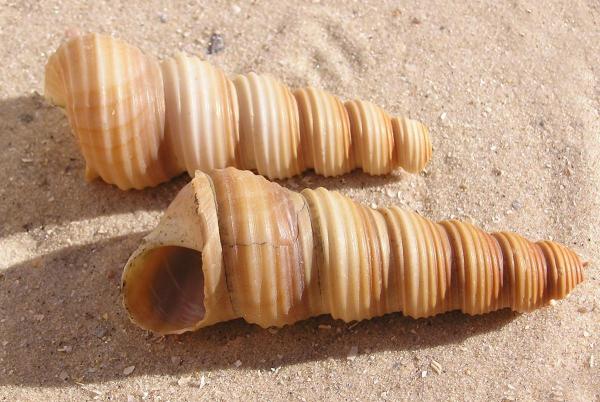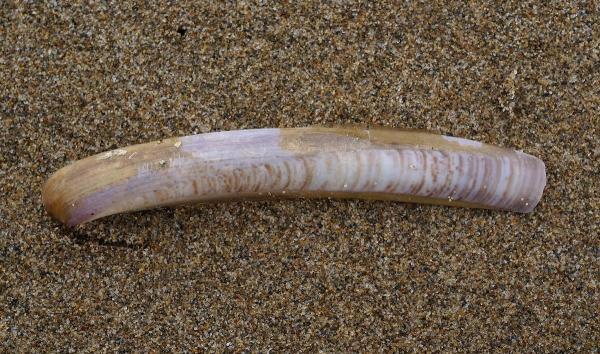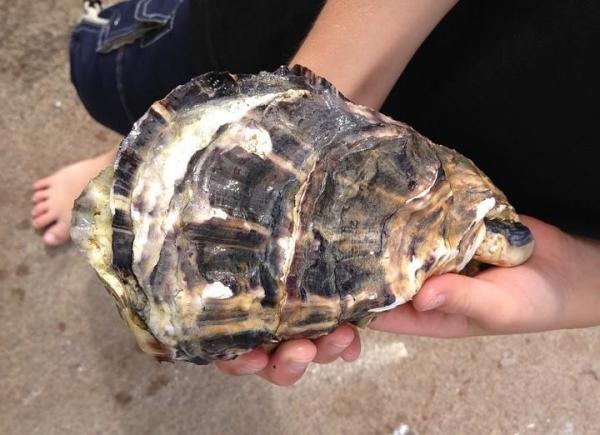
When walking along any beach in your country, you can find countless sea shells and conches, each more beautiful than the last. Here we'll give you some very common examples, and then begin discussing more exotic specimens. You'll learn about the different types and see photos to help differentiate them.
Keep reading this AnimalWised article to find out the some of the most common types of seashells and conches.
About seashells
In a very profane basic way, mollusks with shells - commonly called "seashells" - can be placed into two categories: gastropods and bivalves.
- Gastropods have a single shell which are commonly known as conches. An example commonly found in many cuisines around the world is the purple dye murex.
- Bivalves are animals that have two shells which they can open and close. A very common example of a bivalve animal is the mussel.
Picking up sea shells and conches while walking along the beach is one of the first pastimes that you can teach young children. You should explain to them that the importance doesn't lie in the amount of shells they collect, but in the beauty, integrity and originality of the conch or shell. Then, at home, you can classify them using the internet or an old encyclopedia, which is both educational and fascinating at the same time.
Conches
Turritella
This beautiful and slim shell is very common, but they are not often found intact.

Calilla
This is a very harmonious and beautiful shell, despite its spikes.

Atlantic Triton
This beautiful conch is also found in the Mediterranean Sea, and hermit crabs use it as a mobile home.

Seashell
Razor shell
The difficult thing about razor shells is finding the two valves together.

Cockle
Its beautiful marks come in colors ranging from snowy white to intense red.

Clam
There are countless species of clam, all of them beautiful and very nice to the touch.

Exotic conches that aren't from snails
There are wonderful marine conches in all of the world's seas and oceans, some of which don't actually belong to snails, as the two following ones.
Ormer
Also known as abalones, muttonfish and ear shells, these are gastropod mollusks that are highly sought-after in Asia, although they can be found in many different places. The Mediterranean ones are very small, and they are found along the coast of Minorca.

Nautilus
This wonderful conch belongs to a cephalopod mollusc.

Less common bivalves
Some bivalves have the ability to produce pearls. Pearls are nacre secretions that protect pearl oysters from foreign bodies found inside their shells. In fact, a pearl is actually the cyst of an oyster.
Pearl oyster
The black-lip pearl oyster variety produces beautiful pearls.

Giant clam
These enormous clams are the largest bivalves in the world. They have been used as basins for holy water in churches and cathedrals. Some species exceed 300 kg in weight.

Less common conches
The world of marine conches is extraordinarily vast and beautiful. Here we present some examples.
Cones
These precious conches, to a greater or lesser extent, are poisonous.

Puperita pupa
These small conches are wonderful. They can be found in the Caribbean Sea.

The use of seashells
Shells have a long history, from the fossilized shells that prove there used to be seas where mountains now stand to the shell necklaces found in excavations from the Stone Age. Apart from the diet of the animals that eat them, seashells have been used as currency in some cultures of Africa, the Caribbean and North America. It's also interesting to see the different types of animals with shells.
Seashells have also been used as tools, as musical instruments and as religious objects. Nacre objects are made with mother of pearl shells or porcelain. Cameos, necklaces, bracelets, buttons, fans and a host of objects are made with fragments or incrustations of shells.
If you're a fan of seashells and conches, you may also be interested in learning about the top 5 marine animals in the world.
Don't forget to share pictures of your findings in the comments section!
If you want to read similar articles to What are the Most Common Types of Seashells?, we recommend you visit our Facts about the animal kingdom category.